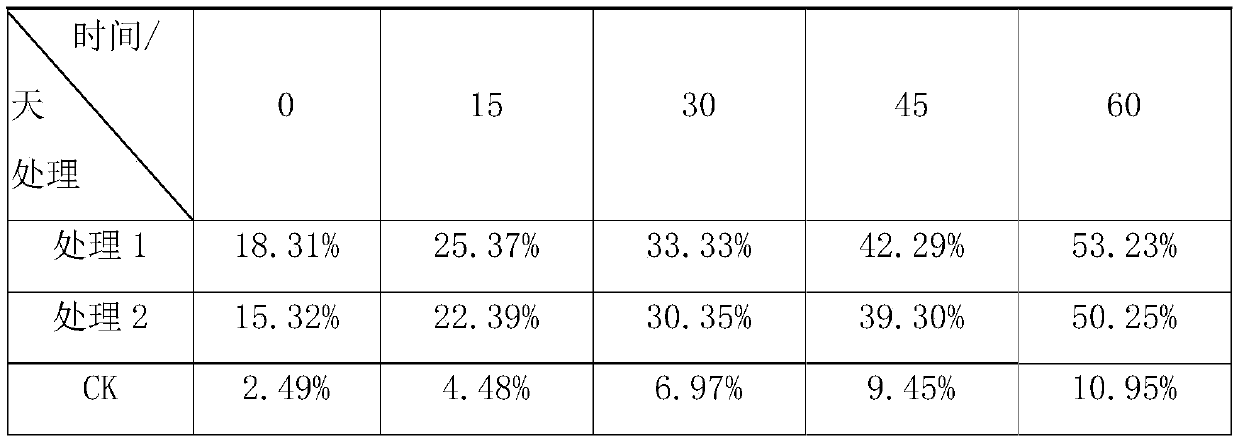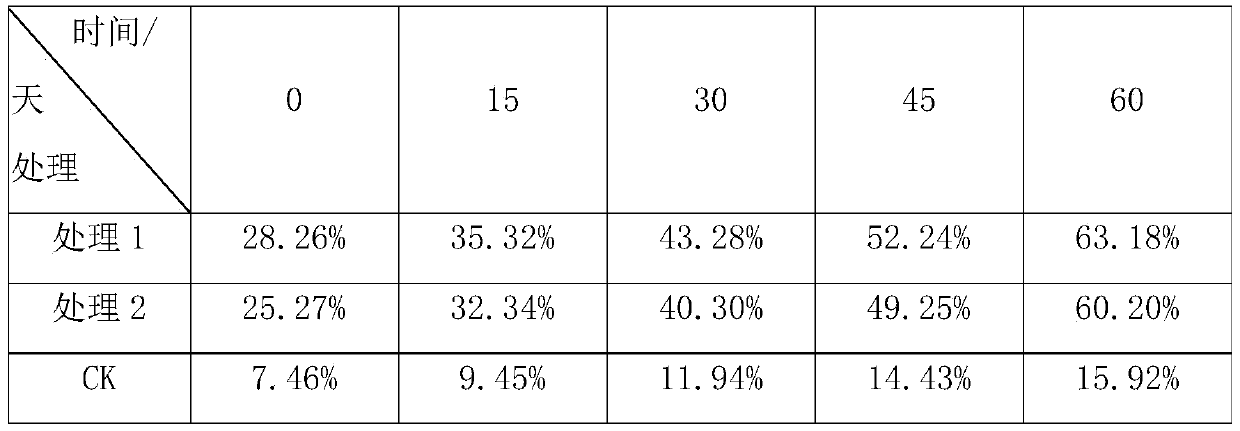Phytoremediation method for pentachlorophenol contaminated soil
A pentachlorophenol and polluted soil technology, applied in the field of phytoremediation of soil organic pollution, can solve the problems of slow growth rate, small biomass, dwarf plants, etc., and achieve the effects of accelerating restoration and increasing restoration speed.
- Summary
- Abstract
- Description
- Claims
- Application Information
AI Technical Summary
Problems solved by technology
Method used
Image
Examples
experiment example 1
[0034] Experimental Example 1: The implementation location is a certain district of Changsha City. Before the experiment, 250 kg of pentachlorophenol-contaminated soil was excavated from the abandoned pentachlorophenol production workshop of a chemical plant, and the pentachlorophenol content was measured to be 10.05 mg / kg after mixing evenly. Be 50cm with diameter, the deep gallon pot of 45cm carries out pot experiment, and each pot is filled with 25kg pentachlorophenol contaminated soil, 2 treatment groups (numbering is processing 1, processing 2), a control group (numbering is CK), A total of 9 pots. Plant a weeping willow in each pot of treatment 1, weigh 3 g of the seeds of the canopy, mix and sow the seeds of alfalfa 5 g evenly; process 2 plant a weeping willow in each pot, weigh 1.5 g of the seeds of the canopy and 2.5 g of the seeds of the alfalfa, mix and sow them evenly; the control group Do not sow any plants and otherwise manage the same. After 5 months of planti...
experiment example 2
[0038] Experimental Example 2: The implementation site is an abandoned chemical plant in a certain district of Zhuzhou City. Before the experiment, the hardened ground of an abandoned pentachlorophenol production workshop in a chemical plant was removed, and bricks and cement blocks that were not suitable for plant growth were removed. Choose 300m 2 Contaminated soil was divided into three plots, which were successively set as treatment 1, treatment 2, and CK. Treatment 1 planted 100 weeping willows, mixed sowed canopy and alfalfa between the rows (300g canopy and 300g alfalfa seeds were mixed evenly and sowed); treatment 2 planted 100 weeping willows, and sowed canopy and alfalfa mixed between the rows (200g canopy and alfalfa Mix with 400g alfalfa seeds evenly before sowing); CK is not treated. Treatment 1, treatment 2, CK and other field management methods are the same. After 5 months of planting, the changes in soil pentachlorophenol content were measured every 15 days....
PUM
 Login to View More
Login to View More Abstract
Description
Claims
Application Information
 Login to View More
Login to View More - R&D
- Intellectual Property
- Life Sciences
- Materials
- Tech Scout
- Unparalleled Data Quality
- Higher Quality Content
- 60% Fewer Hallucinations
Browse by: Latest US Patents, China's latest patents, Technical Efficacy Thesaurus, Application Domain, Technology Topic, Popular Technical Reports.
© 2025 PatSnap. All rights reserved.Legal|Privacy policy|Modern Slavery Act Transparency Statement|Sitemap|About US| Contact US: help@patsnap.com


